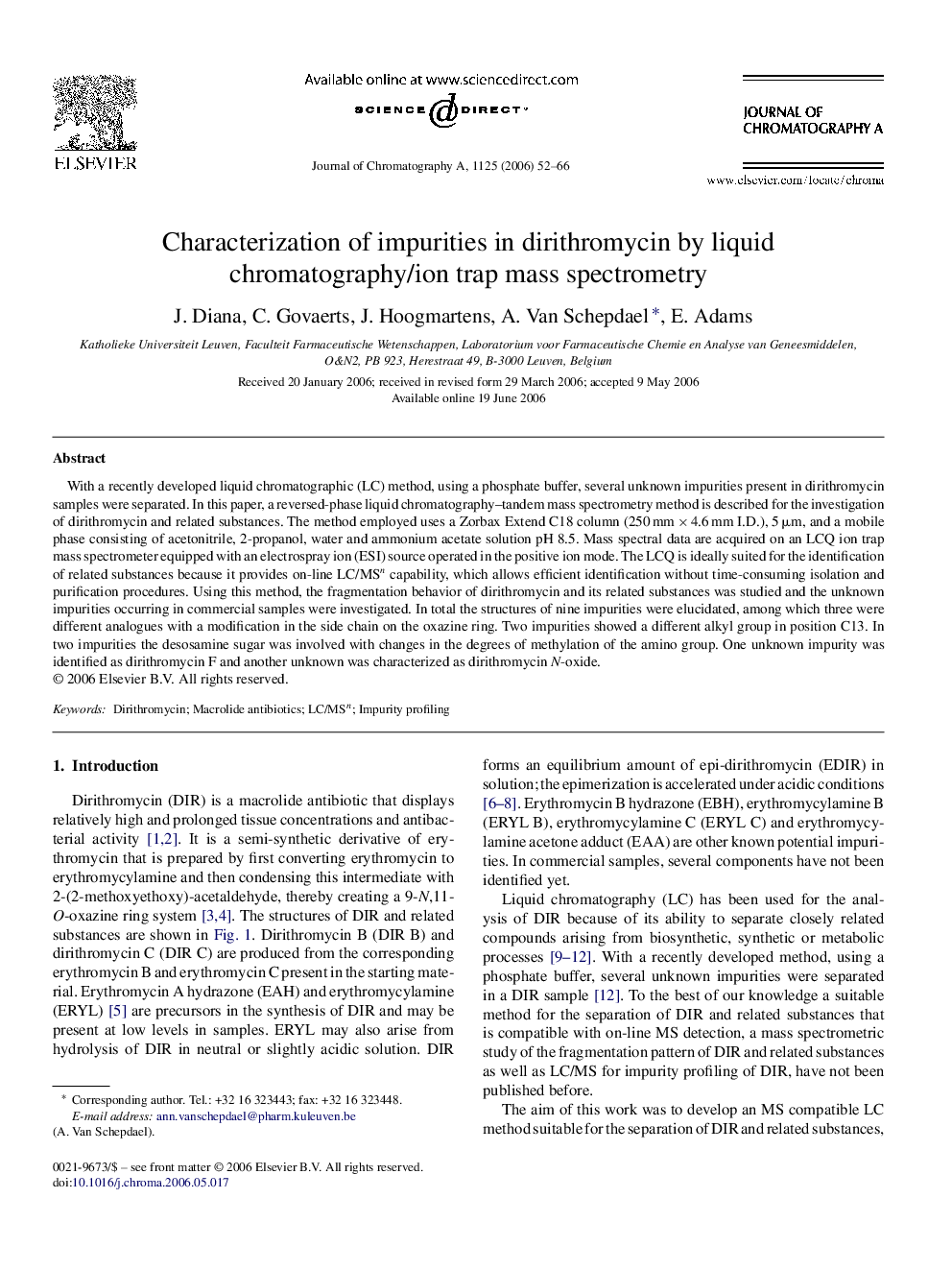| Article ID | Journal | Published Year | Pages | File Type |
|---|---|---|---|---|
| 1208645 | Journal of Chromatography A | 2006 | 15 Pages |
With a recently developed liquid chromatographic (LC) method, using a phosphate buffer, several unknown impurities present in dirithromycin samples were separated. In this paper, a reversed-phase liquid chromatography–tandem mass spectrometry method is described for the investigation of dirithromycin and related substances. The method employed uses a Zorbax Extend C18 column (250 mm × 4.6 mm I.D.), 5 μm, and a mobile phase consisting of acetonitrile, 2-propanol, water and ammonium acetate solution pH 8.5. Mass spectral data are acquired on an LCQ ion trap mass spectrometer equipped with an electrospray ion (ESI) source operated in the positive ion mode. The LCQ is ideally suited for the identification of related substances because it provides on-line LC/MSn capability, which allows efficient identification without time-consuming isolation and purification procedures. Using this method, the fragmentation behavior of dirithromycin and its related substances was studied and the unknown impurities occurring in commercial samples were investigated. In total the structures of nine impurities were elucidated, among which three were different analogues with a modification in the side chain on the oxazine ring. Two impurities showed a different alkyl group in position C13. In two impurities the desosamine sugar was involved with changes in the degrees of methylation of the amino group. One unknown impurity was identified as dirithromycin F and another unknown was characterized as dirithromycin N-oxide.
